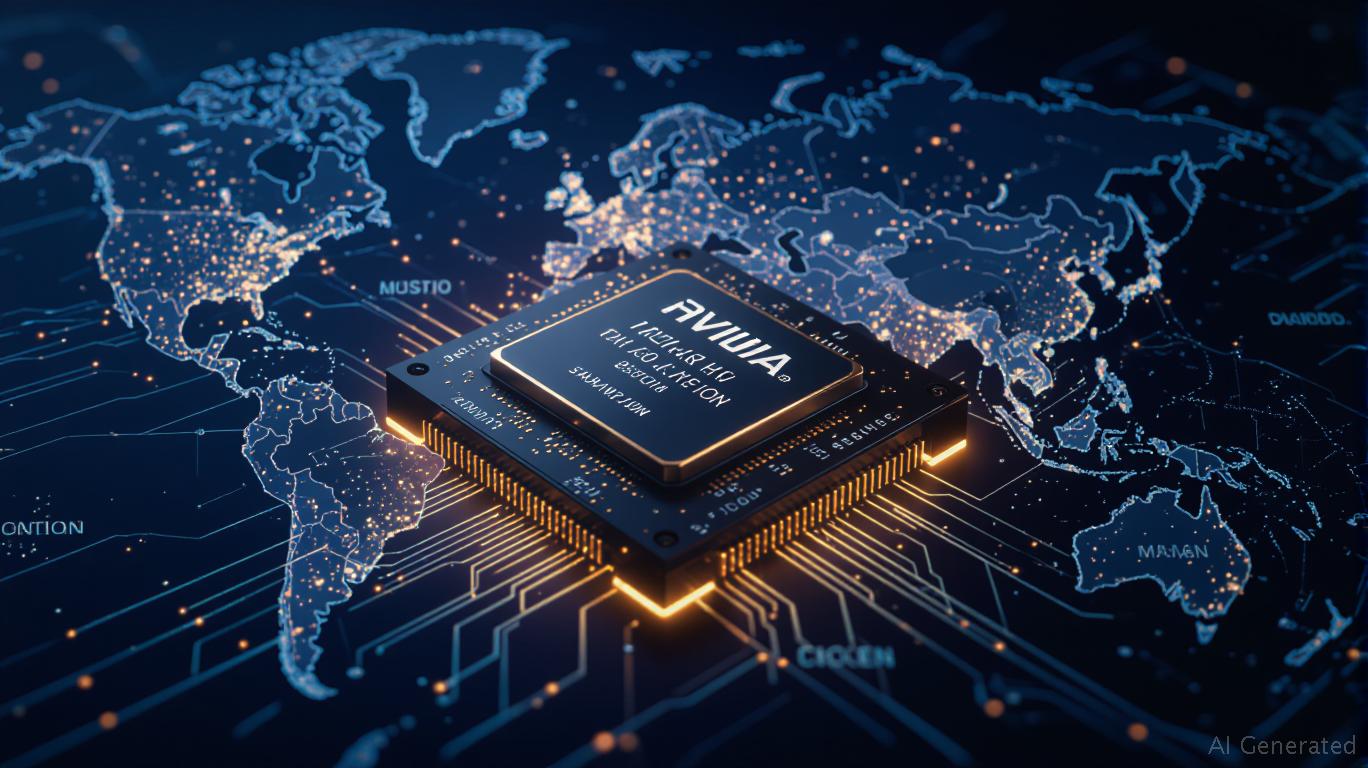NVIDIA: Navigating the AI Chip Gauntlet in a Decoupling World
The global AI chip race is intensifying as U.S.-China tech decoupling reshapes supply chains.
, the undisputed leader in AI infrastructure, faces both existential risks and unprecedented opportunities. While China's accelerated self-reliance efforts threaten its market share, NVIDIA's ecosystem dominance and innovation pipeline position it as a critical stake in the AI revolution. Here's why investors should hold—and even bet—on the GPU giant despite the headwinds.
Market Dominance at Risk: China's Self-Reliance Surge
The U.S. export restrictions have backfired in one key way: they've turbocharged China's AI chip ambitions. Despite losing access to top-tier NVIDIA chips, Chinese firms are now deploying workarounds. For example:
- Smuggling loopholes: A
- Stockpiling: Chinese companies like Alibaba and are hoarding downgraded NVIDIA A800/H800 chips (legal imports hit 1 million units in 2024) to sustain AI training.
- EDA breakthroughs: The July 2025 lifting of U.S. EDA tool bans allowed Chinese firms to revive R&D, but domestic tools like Semitronix's SemiMind (AI-driven EDA) are closing gaps in analog and memory design.
This creates a paradox: while China's self-reliance reduces NVIDIA's direct sales, its chips remain the de facto standard for global AI infrastructure. For instance,
Web Services and Azure—critical to Chinese firms' “cloud-as-a-chip” workaround—rely entirely on NVIDIA GPUs.Opportunities in Ecosystem Lock-In
NVIDIA's CUDA software ecosystem is its moat. Over 90% of AI research papers today are optimized for CUDA, creating a sticky network effect. Even as China builds its own AI frameworks (e.g., Huawei's MindSpore), they lack the breadth of tools and developer mindshare:
- AI-as-a-service: NVIDIA's $2.5 billion acquisition of Arm (post-UK regulatory approval) will deepen its control over global chip architecture.
- Quantum computing partnerships: Teams at
- Enterprise adoption: 70% of Fortune 500 companies are now deploying NVIDIA's AI platforms for predictive maintenance, fraud detection, and drug discovery.
Long-Term Play: Geopolitical Chess and Innovation Arms Race
The real risk isn't China's progress—it's whether NVIDIA can navigate escalating trade barriers while maintaining its innovation edge. Key catalysts include:
1. AI supercomputing: NVIDIA's $6.9 billion data center revenue in Q2 2025 (up 42% YoY) underscores demand for its quantum and exascale systems.
2. Hyperscaler partnerships: AWS's new “NVIDIA Cloud” offering, which pools 100,000+ GPUs, creates a moat against Chinese competitors.
3. Regulatory agility: Unlike
Even in China, NVIDIA's influence persists. Huawei's AI models (e.g., Pangu-Σ) still require CUDA-like tools for efficiency, and its 200,000 annually produced Ascend chips pale against NVIDIA's global output.
Investment Thesis: Hold for the AI Supercycle
Despite short-term concerns, NVIDIA remains the linchpin of the AI economy. Its CUDA ecosystem, enterprise partnerships, and R&D pipeline (think: 2nm chips by 2026) ensure dominance. Key risks include:
- U.S. export restrictions tightening further: A worst-case scenario could limit cloud access, but NVIDIA's lobbying power is formidable.
- Chinese “asymmetric” innovation: Breakthroughs in quantum or RISC-V architectures could disrupt GPU supremacy, though these are 5+ years away.
Recommendation: Hold NVIDIA for investors with a 3–5 year horizon. The stock's current P/E of 68x (vs. 25x for the S&P 500) reflects premium AI exposure. For aggressive investors, pair a long position with puts on China's semiconductor ETFs (e.g., CHIX) to hedge decoupling risks.
The AI revolution won't be derailed by trade wars—it will be won by those who control its infrastructure. NVIDIA is still writing the rulebook.
Data sources: BIS export reports, NVIDIA investor presentations, semiconductor forecasts.
Ask Aime: Invest in NVIDIA amid the AI chip race and U.S.-China tech decoupling.
Sign up for free to continue reading
By continuing, I agree to the
Market Data Terms of Service and Privacy Statement

Comments
No comments yet